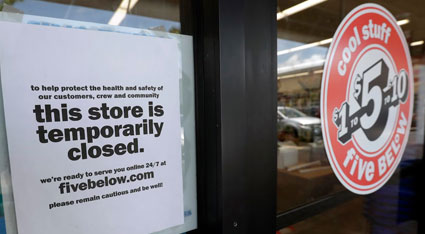This Isn’t Something You Can Sit On, So Let's Strategize Your Next Steps Together.

Larry Heinkel, J.D. LL.M.
Tax & Bankruptcy Attorney
since 1983
Hello, I'm Larry Heinkel, a seasoned tax and bankruptcy attorney at Tax Problem Solver. As a small business owner, you've been navigating through a dark tunnel since the COVID pandemic began, facing unprecedented challenges and uncertainties that threaten the very survival of your business. The path of dealing with your EIDL loan, especially if you've found yourself unable to make payments, can feel like an extension of this daunting journey, shrouded in fear and confusion.
But you're not alone in this. We've guided countless business owners through this very tunnel, understanding the weight of the darkness you're feeling and the pressing need to protect your business and personal assets. It's crucial to address this situation promptly, and with our guidance, there's a light at the end of this tunnel—a path to safeguarding what you've built and moving towards brighter days.
Recently, the challenges around Economic Injury Disaster Loans (EIDL) have taken a new turn. With recent developments from the government, addressing your loan situation sooner than later has become more crucial than ever. Taking action now is essential!
The Government is Coming and They're Not Playing Mr. Nice Guy
The Biden administration's recent announcement to intensify efforts to recover an estimated $30 billion in unpaid pandemic loans marks a significant change in approach. This pivot towards aggressive recovery efforts underscores the urgency for small business owners to seek resolution for their past-due loans. Waiting is no longer an option—the time to secure your business’s future is now.
Understanding EIDL and the Importance of Strategic Planning
Economic Injury Disaster Loans were a lifeline for many during the pandemic. However, as payment obligations become due, not every business has rebounded sufficiently to meet these demands. This is where strategic planning becomes indispensable. Whether you're receiving notices from the SBA or simply struggling to keep up with payments, an Offer in Compromise (OIC) might be the optimal path to relief. But it's essential to navigate this process with expertise.

 An Offer in Compromise (OIC) might offer a lifeline, allowing you to negotiate your loan terms based on your current financial situation.
An Offer in Compromise (OIC) might offer a lifeline, allowing you to negotiate your loan terms based on your current financial situation.
When done properly, an OIC can have you solving your EIDL situation for pennies on the dollar, making it a very desirable solution. OICs are typically doomed to fail when undertaken by someone without proper guidance. So it makes excellent sense to have an expert taking care of it for you, ensuring a much greater success rate. Because we specialize in this kind of work and have an excellent track record, you can absolutely trust in the expertise of my team. We know how OICs work and exactly what’s needed to create them and submit them correctly.
The process demands detailed documentation and strategic thinking, including but not limited to:




